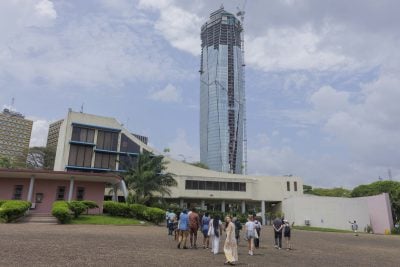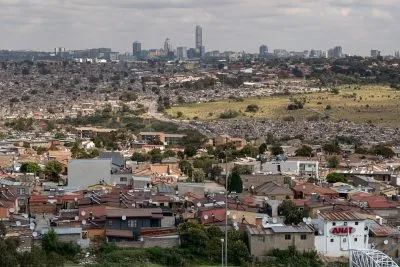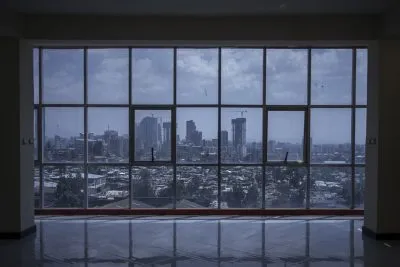The blueprint on how, where and when South Africa will spend its massive ($100bn) infrastructure allocation has now been made public. If all goes to plan, writes Tom Nevin, the country can expect a bonanza in new jobs and first-rate public services over the near future.
A hefty tome recently thudded onto the desks of South African government department heads, top banking brass, investors, the big construction companies, foreign diplomats and other economically significant entities.
Its title is The State of South Africa’s Economic Infrastructure, Challenges and Opportunities and it was produced jointly by the Development Bank of Southern Africa (DBSA) and the Presidency’s Department of Performance Monitoring and Evaluation.
At 164 pages it is a volume of formidable proportion, setting out in chapter and verse the state of the country’s infrastructure and how the government will lay a highway of its own to join the disparate pieces of what needs to be done, by when and at what cost. It will be one of the more important documents of 2013. Upon its diligent application hangs the fate of the economy, a beginning for meaningful new employment and the mollifying of a restive electorate already showing its displeasure of the government in recent by-elections.
The social improvements promised in 1994 to alleviate the grind of apartheid have not met expectations, although the ANC government has spent billions of rands in the up-scaling of housing, education and health. For most of the nearly two decades of democracy, the government’s attempts to uplift the mass of South Africans’ social lot has been of one step forward and two steps back, with poor maintenance shortening the lives of public buildings and other amenities such as roads and electricity services.
Unsurprisingly, the new report devotes much space to the importance of planning in the expenditure of budgets and communication across sectors.
The study identifies critical challenges and issues in implementing government’s planned three-year, R845bn ($100bn) infrastructure development programme.
Setting the ball rolling, the Minister in The Presidency: Performance Monitoring and Evaluation as well as Administration, Collins Chabane, outlines in the report’s introduction that the PICC “has clustered, sequenced and prioritised 17 strategic integrated projects and the issues raised in the report will assist government in thinking outside our existing paradigm”.
More to the point, the preamble argues that for South Africa to raise its game in the infrastructure investment programme, the need is not only for improved planning around the energy, transport, water and telecommunications sectors, but also integrated planning across sectors.
In effect, sectors should be talking to one another a lot more frequently than has been their custom. The key, it says, is interaction and cooperative planning. Effective delivery depends on distinguishing “high-growth economies from low-growth ones”.
The manuscript underlines the issue with the example that the water sector cannot operate without electricity, which in turn cannot operate without water. Similarly, the use of information communication technologies across, rail, roads and harbours is necessary for enhancing management capability and increasing efficiencies.
“In short,” it says, “a systematic infrastructure development planning process is required to prioritise, sequence and resource projects, including the mobilisation of private sector participation.”
Pipeline of projects
South Africa’s Finance Minister Pravin Gordhan has disclosed that the country is in the process of developing a 10- to 20-year pipeline of projects, allowing it to move away from the current stop/start performance that has debilitated and alienated the construction industry in recent years.
“What we need in South Africa are efficient delivery systems so that intentions and policies begin to be converted, very efficiently, into actions on the ground that make a positive impact on our economy,” says Gordhan. Does this mean that the government is considering a bigger role for the private sector and the country’s development finance institutions as a fast track for South Africa’s infrastructure drive? Both the government in the infrastructure handbook and the finance minister make unambiguous reference to the possibility. The country’s infrastructure ‘to do’ list will cost over a trillion rands, (when municipal needs are included) which Gordhan believes is a sum the country can both afford and lay its hands on in various ways.
The finance minister reports that the pace of public infrastructure spending has already picked up over the past 12 months and that the R845bn ($100bn) build programmes would accelerate energy, transport, water and housing investment, open up mining and industrial opportunities and boost the installation of economic linkages across Southern Africa.
In his medium-term budget policy statement, Gordhan pointed out that while growth in private-sector investment had slowed over 2011, as local businesses held back on capital projects, public sector gross fixed-capital formation grew at nearly 11%. Government spending on water, sanitation and road infrastructure had also picked up.
The National Treasury, meanwhile, believes that with the economy improving, aided by a new wave of infrastructure development activity, rising confidence should translate into an improvement in private-sector gross fixed-capital formation.
Budget underspending
The State of South Africa’s Economic Infrastructure report laments that “government budgets are often underspent and opportunities are missed to crowd-in the private sector. Importantly, resources are not targeted at high-impact priorities”.
Accordingly, urgent reform is critical to ensure that finance is available for the infrastructure priorities that are selected through integrated infrastructure planning.
It also worries about little or no funds being set aside for post-infrastructure-construction care. “There are few dedicated funding streams for operations and maintenance and this leads building of these costs into infrastructure plans being historically neglected … The priority is, therefore, to create ring-fenced resource streams for infrastructure rehabilitation and maintenance, notably at the municipal level,” it says.
It is also important to monitor the elimination of backlogs, while ensuring that the life cycle of the asset is fully taken into account and not just the delivery. “If you can’t afford the life-cycle cost, do not build it,” advises the report. The authors also make mention of a decades-old weakness in infrastructure implementation and management – a surfeit of unmanaged regulation and little effective enforcement.
The report concentrates on six economic infrastructure sectors – energy, rail, roads, ports, water and telecommunications – finding that their regulatory framework is in as much need of a makeover as the infrastrucure is of an overhaul. Rail and road attract the most criticism because regulation is largely absent and such transgressions as overloading go largely undetected and subsequently unpunished.
Meanwhile, South Africa’s municipalities need about R473bn ($60bn) for backlog eradication, upgrading, growth and expansion, rehabilitation and the replacement of existing municipal infrastructure.
“To put that into perspective,” observes PDG consultant Kim Walsh, “the current municipal loan book is at R23bn ($2.7bn) and an additional R24bn ($2.8bn) is required every year for the next 10 years. This is unlikely to be feasible, and demonstrates the scale of the problem that government faces”.
Protests over poor public-service delivery have soared this year. Reports of violent demonstrations across South Africa protesting deteriorating municipal infrastructure are virtually daily occurrences, highlighting the need for greater maintenance of existing infrastructure and for the delivery of promised new social development.
If South Africa can get the coordination and planning right, the opportunities seem real to score a number of economic goals. An earnest start to the actual build will provide jobs in the tens of thousands in the construction and allied trades, manufacturing will experience a much-needed fillip, new money from new workers with new jobs will circulate healthily sending a ripple through both the fiscus and a lacklustre private construction sector will enjoy a major share of the needed build and strengthen as a result.
South Africa does not have sufficient professional capacity to handle the build, and foreign talent will be imported with a much-needed transfer of skills. The list is endless of the good things that could result from so massive an undertaking as spending nearly a trillion rands on installing infrastructure.
Want to continue reading? Subscribe today.
You've read all your free articles for this month! Subscribe now to enjoy full access to our content.
Digital Monthly
£8.00 / month
Receive full unlimited access to our articles, opinions, podcasts and more.
Digital Yearly
£70.00 / year
Our best value offer - save £26 and gain access to all of our digital content for an entire year!
 Sign in with Google
Sign in with Google 


